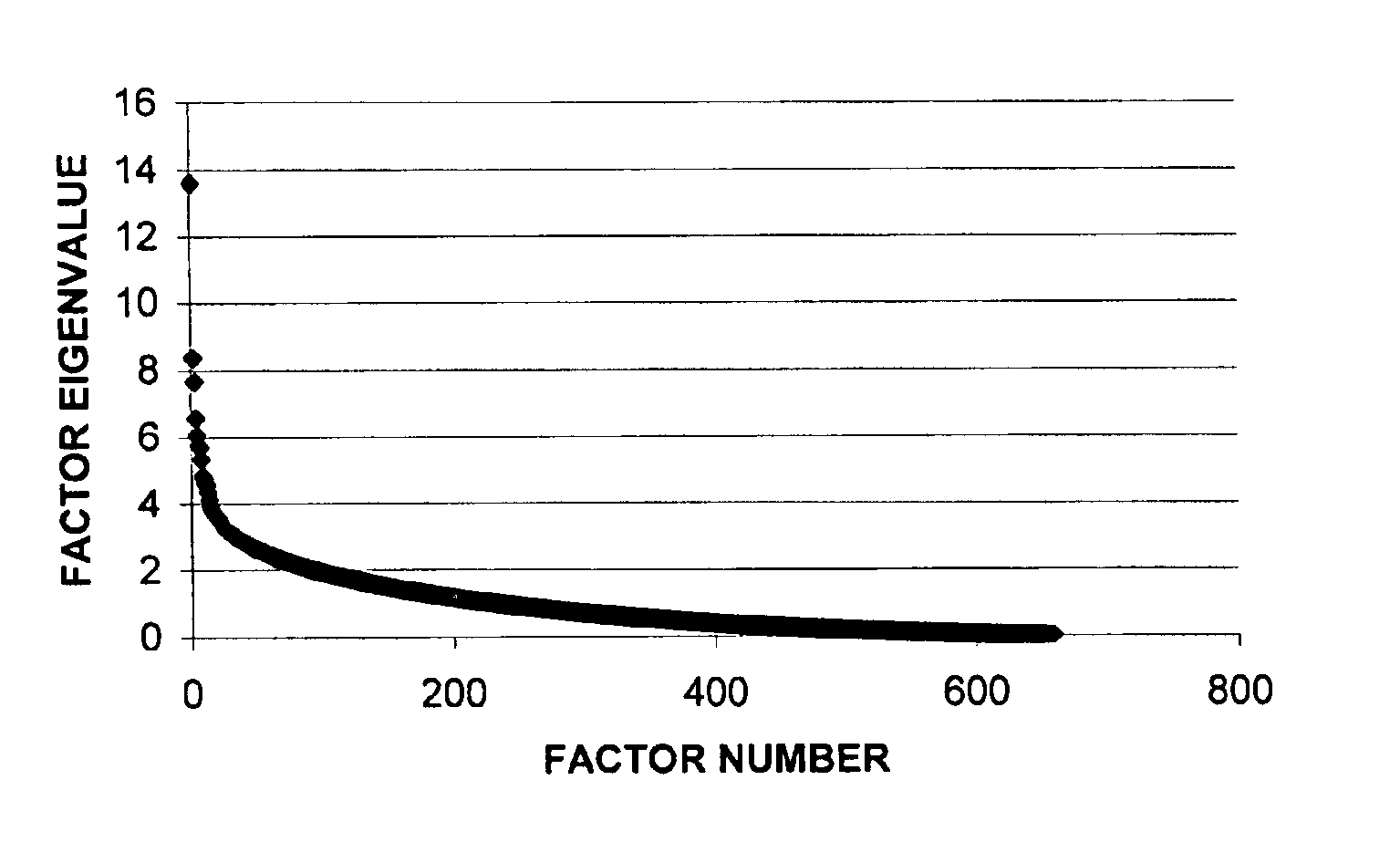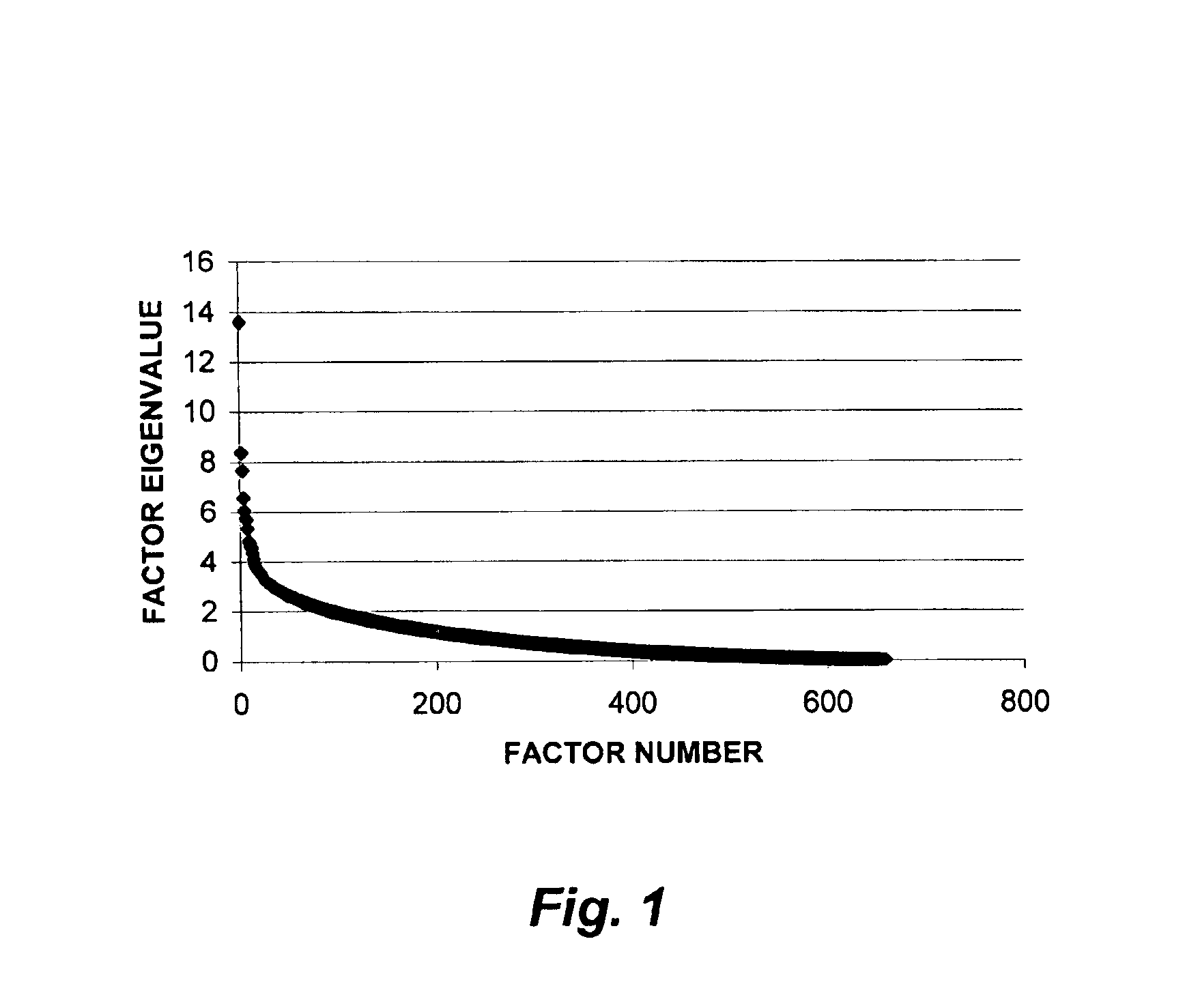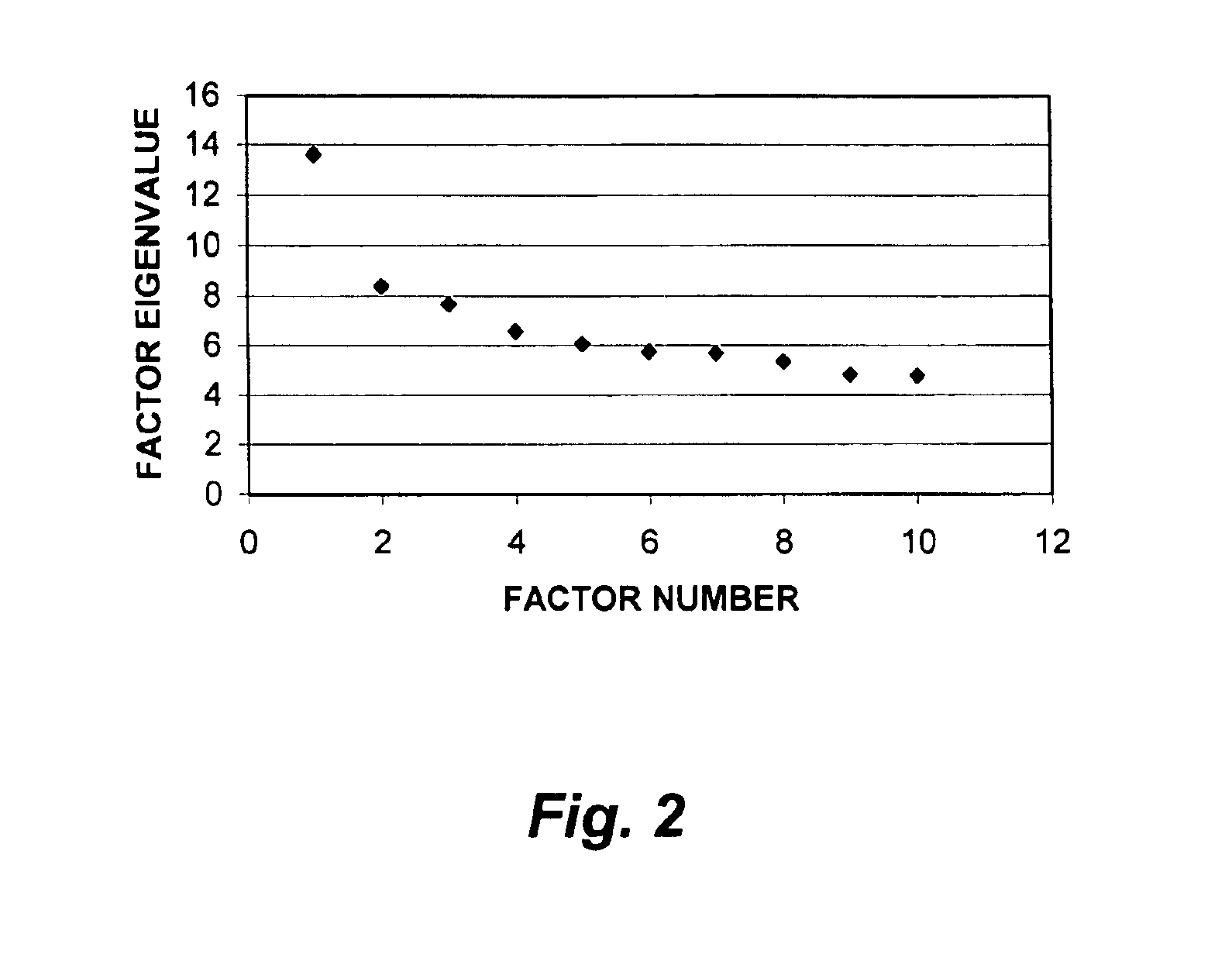Method for data and text mining and literature-based discovery
- Summary
- Abstract
- Description
- Claims
- Application Information
AI Technical Summary
Benefits of technology
Problems solved by technology
Method used
Image
Examples
example 1
Factor Matrix Text Filtering and Clustering
[0179]This example shows how factor analysis was used as a context-dependent word filter for cluster analysis, and demonstrates how the fractal nature of factor matrix-associated graphs affected the resultant number of factors used in the analysis.
[0180]In the first part of this example, 930 Medline Abstract-containing records related to Raynaud's Phenomenon, and published in the 1975-1985 time period, were retrieved. Non-trivial single words (659) were extracted from the database of Abstracts, along with the number of documents in which each word appeared (document frequency). The co-occurrence of word pairs in the same document (word co-occurrence frequency) was computed, and a correlation matrix (659×659) of word pairs was generated. The variables were factorized, and a factor matrix was generated. The factor matrix was then used to select the sub-set of the 659 words that had the most influence in determining the theme of each factor. T...
example 2
Context-Dependent Conflation
[0236]This example showed that word stemming in text processing was strongly context and application dependent, and that selection of word variants for stemming was context / application dependent. In addition, this example showed that the conflation filter rule proposed in (2) did not have a strong rational basis.
[0237]A simple experiment was run, as part of a larger text mining study on the Fractals literature, to test the effect of word stemming on cluster theme definition. A Fractals-based query retrieved 4389 Science Citation Index records containing Abstracts, covering the period 2001-October 2002. All the single Abstract words were extracted, and the highest frequency highest technical content words (820) were selected for word clustering. A two step clustering process was used, where a factor matrix was generated initially with no word combination required, then a hierarchical clustering was performed using word combinations based on the factor matr...
example 3
Formation Retrieval / Marginal Utility / Tracking
[0253]This example describes an iterative full-text information retrieval approach based on relevance feedback with term co-occurrence and query expansion (Simulated Nucleation). The method generated search terms from the language and context of the text authors, and was sufficiently flexible to apply to a variety of databases. It provided improvement to the search strategy and related results as the search progressed, adding relevant records to the information retrieved and subtracting non-relevant records as well. Finally, it allowed maximum retrieval of relevant records with high signal-to-noise ratio by tracking marginal utility of candidate query modification terms using a semi-automated optimization procedure. The method was applied to information retrieval for the technical discipline of textual data mining (TDM).
[0254]In Simulated Nucleation for information retrieval, the purpose was to provide a tailored database of retrieved doc...
PUM
 Login to View More
Login to View More Abstract
Description
Claims
Application Information
 Login to View More
Login to View More - R&D
- Intellectual Property
- Life Sciences
- Materials
- Tech Scout
- Unparalleled Data Quality
- Higher Quality Content
- 60% Fewer Hallucinations
Browse by: Latest US Patents, China's latest patents, Technical Efficacy Thesaurus, Application Domain, Technology Topic, Popular Technical Reports.
© 2025 PatSnap. All rights reserved.Legal|Privacy policy|Modern Slavery Act Transparency Statement|Sitemap|About US| Contact US: help@patsnap.com



